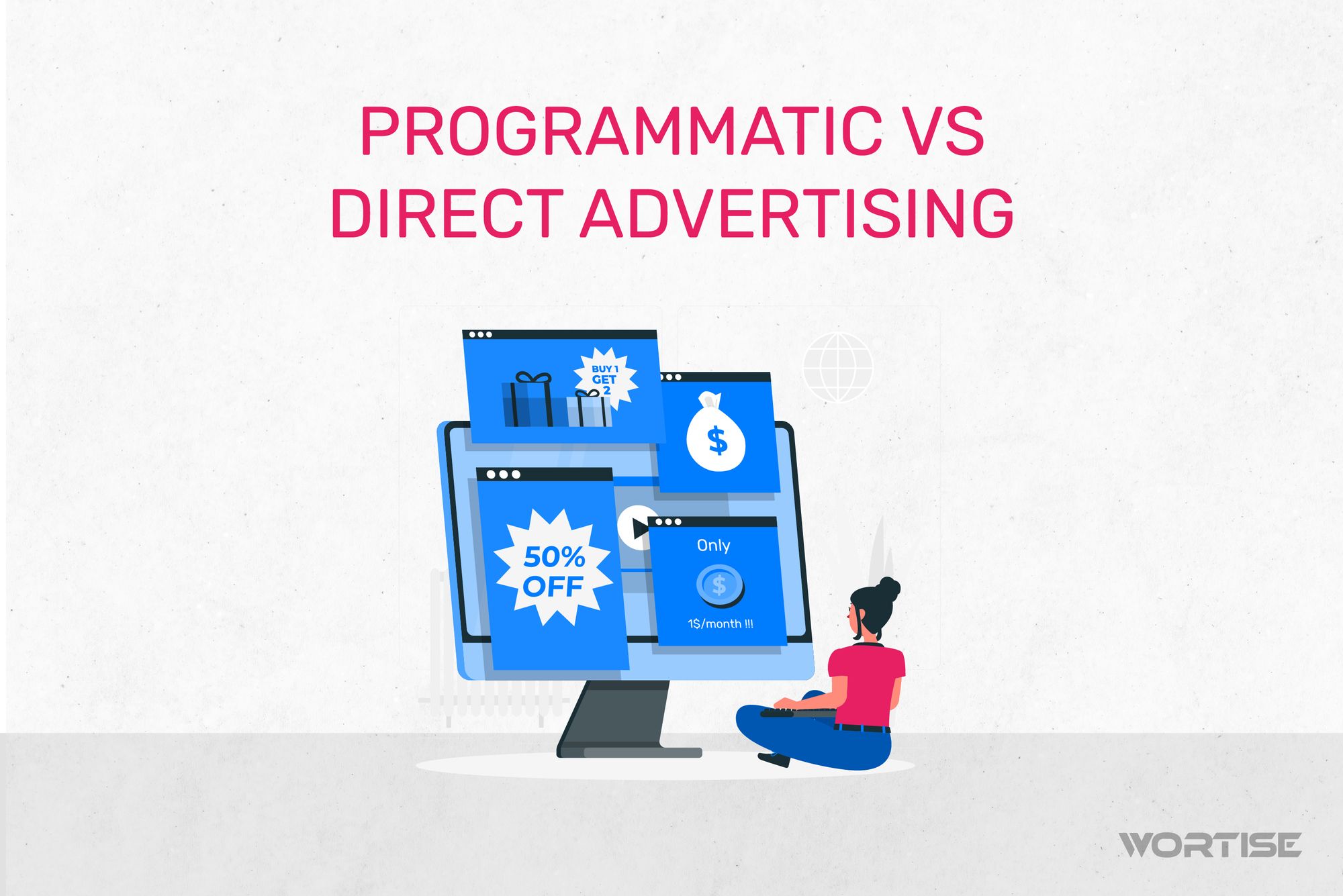¿Apuestas por la automatización de procesos? Entonces choca esas cinco con los responsive display ads. Sin ellos sería imposible que cada anuncio logre ajustar su tamaño y formato de manera automática, por lo que servirán para que no inviertas tanto tiempo y esfuerzo en monetizar.
Si entiendes su funcionamiento irías un paso adelante en tu rol como editor, pero si desconoces su ejecución estarías en una desventaja plena ante tus pares. En este post queremos mostrarte algunas prácticas para que incrementes tu app revenue con ayuda de los responsive display ads.
¿Qué son los responsive display ads o anuncios gráficos responsivos?
Cuenta la ciencia que los pulpos tienen la capacidad de adaptar su color y superficie del cuerpo según las características del ambiente en el que se encuentran, algo muy similar a lo que hacen los responsive display ads. ¡Ellos son los pulpos del mundo de la publicidad programática!
Estos anuncios ajustan de forma automática su tamaño, apariencia y formato para adaptarse a los distintos dispositivos móviles o sitios web en los que se reproducen, siguiendo las pautas fijadas por la Red de Display de Google (GDN).
¿Cómo y por qué funcionan los responsive display ads? Su combustible principal es la Inteligencia Artificial. Gracias a la IA son capaces de optimizar su rendimiento y combinar elementos de forma dinámica –texto, titulares, imágenes, videos, etc– para mostrarse en cada aplicación efectivamente.
Como funcionan dentro de la Red Display de Google, tienen un alcance inmenso de socios de inventario y una audiencia bastante apetecible que, si es bien aprovechada, puede ayudarte a maximizar tu app revenue.
¿Cómo funcionan los anuncios gráficos responsivos?
Aquí funciona todo de manera automatizada y en tiempo real. Básicamente, el modelo de Machine Learning determina los componentes básicos de cada anuncio según los recursos cargados (videos, imágenes, etc), los cuales se catalogan como “activos”.
Una vez tenga todo a la mano, el modelo de aprendizaje automático emplea datos históricos de rendimiento para insertar el anuncio ideal para el usuario ideal, o bueno, eso es lo que intenta.
Todo eso se produce porque Google chequea el espacio y hace una selección de los anuncios con mejor integración de activos.
Quienes anuncian tienen poca influencia sobre el diseño y la ubicación de las publicidades. La IA ajusta todo de forma automática y toma decisiones según análisis previos de rendimiento, lo que también resulta un poco negativo para los advertisers, que tienen menos influencia sobre la ubicación de los anuncios y, en consecuencia, todo el rendimiento que esperan queda en manos de Google.
Menos información sobre el rendimiento de la campaña
Seas publisher o anunciante, debes saber que Google ofrece solamente 4 criterios para medir el rendimiento de los anuncios: mejor, bueno, bajo y aprendizaje.
Esta valoración genérica no proporciona datos detallados sobre qué tipos de anuncios y qué activos mostró en cierto momento.
A los advertisers solo les queda confiar en el criterio de Google y tener fe de que sus anuncios si están generando un buen rendimiento.
Responsive display ads vs anuncios tradicionales: principales diferencias
Siempre es bueno hacer comparaciones para sacar los pros y contras de cada propuesta publicitaria. En el caso de este versus, podemos decir que los anuncios gráficos tradicionales tienen imágenes suministradas por los advertisers y su diseño y tamaño se mantiene inmutable, pero con los responsive display ads esto no sucede así.
¿Es positivo o negativo? Todo depende de la óptica con la que lo mires. Un diseño original y proporcionado por el anunciante garantiza que el mensaje que quiere mostrar llegue puro, sin aditivos ni modificaciones. Si su propuesta es buena y logra captar la atención de los usuarios, los publishers serán beneficiados con un incremento en las visualizaciones e interacciones, lo que repercute en un mejor eCPM.
No obstante, si su propuesta publicitaria es deficiente, aquí sí juega un papel clave los anuncios gráficos responsivos, pues pueden mejorar su rendimiento al adaptarlo a distintos formatos y espacios para garantizar una mayor visibilidad.
Algunos consejos de Google para no fracasar con los responsive display ads
Tienes suficiente información sobre los anuncios gráficos responsivos, pero ¿cuáles son sus límites y qué debes hacer para tener éxito? Google comparte algunos tips que pueden servirte de guía.
En primer lugar, aunque es posible añadir hasta 15 imágenes, el gigante tecnológico recomienda usar solamente cinco de mayor impacto.
Otra cosa fundamental es el tamaño de estas imágenes para que puedan adaptarse a todos los entornos móviles sin perder la calidad. En particular, estas son las medidas sugeridas:
- 300×250
- 970×250
- 300×500
- 300×600
También existe la posibilidad de que Google genere un video con los recursos que suministres, por eso la importancia de cuidar todos los detalles: calidad de las imágenes y videos, ortografía del texto, claridad en el logo, etc.
Y ya que mencionamos el logo, debes saber que puedes añadir hasta 5 formas de logotipos. Si por alguna razón careces de un logo o no logras cargarlo por equis razón, quédate tranquilo: Google te da uno neutral con la primera letra de tu marca.
Títulos, descripciones y más
En el caso de los titulares se recomienda usar hasta cinco cortos con un máximo de 30 caracteres. Si deseas uno largo, procura que no exceda los 90 caracteres.
Con las descripciones también se recomiendan 5 breves y Google es el que va a determinar cuál mostrar en el momento oportuno. Por otro lado, el llamado a la acción (CTA) debe propiciar el valor de la marca y, en el caso del nombre del negocio, se recomienda ponerlo en mayúscula.
Si los anunciantes agregan todos los recursos posibles, Google podrá combinarlos de la mejor manera y hacer que el espacio publicitario de cada publisher cobre valor.
Beneficios de los anuncios gráficos responsivos
Poder ahorrar tiempo y esfuerzo es un beneficio evidente de los responsive display ads, pero claramente hay otros puntos a favor que queremos mostrarte a continuación:
Simplificación: Esta forma de publicidad ayuda a simplificar el proceso de creación de anuncios. El beneficio es inmediato: publishers y anunciantes reducen considerablemente el tiempo de trabajo manual de anuncios para adaptarlos a distintos formatos.
Adaptabilidad a diferentes dispositivos: Imagina apostar por los formatos verticales y perder la posibilidad de mostrar anuncios con calidad en formato horizontal. Con estos anuncios responsivos no pasa esto pues se ajustan de manera automática y fluida a diferentes tamaños de pantalla.
Óptima visibilidad: Esta capacidad de adaptarse a diferentes formatos permiten que los responsive display ads consigan colarse en infinidades de aplicaciones móviles y sitios web con la ayuda de la IA, llegando a nuevas audiencias. Por algo los denominamos los pulpos de la publicidad programática.
Fomentan la interacción: Como usa todos los recursos disponibles para crear anuncios atractivos en distintos formatos, también hay que destacar su capacidad de generar creatividades agradables que incentivan a los usu
arios a interactuar, bien sea para obtener más información o descargar una determinada app.
Optimización automática: Esto es un alivio para los publishers, que verán un descenso significativo en la carga de trabajo. Los responsive display ads, gracias a la ayuda de la IA, optimizan el rendimiento de los anuncios y realizan ajustes en tiempo real para maximizar su eficiencia; todo esto sin necesidad de que el editor esté 24/7 pendiente de ejecutar ajustes manuales.
Mejores prácticas para exprimir al máximo el potencial de los responsive display ads
Nunca puedes confiarte del potencial de Google y de la magia de la Inteligencia Artificial. Debe haber un esfuerzo notorio de todos los actores que participan en la publicidad programática para alcanzar un máximo de resultados. Te ayudamos con algunos tips:
1. Proporciona contenido visual atractivo
El principio de toda publicidad exitosa es la calidad de las imágenes y videos. Asegúrate de que sean disruptivas, en alta resolución, con colores atrayentes, capaces de adaptarse a cualquier formato sin perder su esencia.
2. Utiliza un CTA que enamore
No es lo que dices, es como lo dices. La moraleja es que suministres diferentes llamados a la acción convincente y originales para que ayuden a realzar el mensaje de los anuncios. Créenos, un buen CTA conlleva al usuario a descargar la app, interactuar con el anuncio o comprar.
En este punto necesitas mucho ingenio y sumar estrategias de marketing.
3. Diversifica tu propuesta
La flexibilidad que ofrecen los responsive display ads permiten que sea posible experimentar con varios formatos. Esto es como cocinar: mientras más ingredientes tengas a la mano, más sabrosa y condimentada la comida. Probar con distintos titulares y combinaciones visuales hace que puedas dar en el clavo y encontrar la propuesta idónea para enamorar a la audiencia.
4. Monitorea y haz seguimiento de las conversiones
No es poner los anuncios a correr y esperar que todo se haga. Realiza siempre un monitoreo de los anuncios y ejecuta ajustes en tiempo real para obtener mejores resultados. Pon atención a las tasas de clics (CTR) y de conversión y comprueba en qué zona geográfica está teniendo mayor éxito.
Todos estos ajustes son necesarios para que la segmentación sea cada vez más eficiente.
5. Descripciones dinámicas
Crear múltiples descripciones atractivas permite que Google determine la combinación perfecta para tener un rendimiento óptimo. Por eso, despierta la creatividad y el escritor que llevas por dentro para resaltar los puntos más beneficiosos de tu anuncio.
En los responsive display ads cada palabra cuenta. Evita las frases de relleno, ve directo al grano.
6. Personaliza las creatividades
Aunque los anuncios gráficos responsivos adaptan el contenido a los usuarios según su comportamiento de navegación, no estaría mal que acciones en adaptar todas las imágenes, videos, texto y titulares para que personalices cada publicidad.
A estas alturas ya debes tener claro cómo es tu cliente ideal con los datos que has recopilado. Si trabajas en función de satisfacer sus necesidades y te apoyas con la IA de Google, por lógica tendrás mayores interacciones.
7. Usa la orientación optimizada
La orientación optimizada se habilita de forma automática para todas las campañas de display. ¿Su ventaja? Con la tecnología de Google se obtienen datos valiosos para el remarketing que dan paso a nuevas estrategias para atraer a esos clientes que una vez tuvieron contacto con tu publicidad, pero por alguna razón ya no están activos.
La orientación optimizada analiza palabras clave en los activos –videos, textos, etc– y luego las compara o relaciona con las audiencias que sienten atracción por estas palabras.
8. Apégate al poder de los informes de atribución
Estos informes muestran el camino que siguen los usuarios para completar conversiones. Sirven muchísimo para saber qué estrategias funcionan mejor juntas para producir un máximo de interacciones.
Con este recurso, que permite el uso de la interfaz de usuarios de Google, puedes optimizar las campañas para conseguir una mayor participación.
¿Qué debo hacer para que mis anuncios gráficos responsivos no transgredan las normas?
Hay que ser muy cuidadoso con las políticas de consentimiento de datos de Google y de la plataforma de mediación que utilices. Por ello, procura siempre garantizar que se cumplan las normas de seguridad de los datos que obtuviste de primera mano de cada usuario, con el consentimiento de ellos mismos.
Además, sé siempre transparente con las políticas de privacidad –sin letras chiquitas–, aplica auditoría de forma periódica y respeta las preferencias de los usuarios.
Por otro lado, escoge una red publicitaria que vaya en consonancia con los responsive display ads y tenga herramientas potentes: gran alcance de audiencia, formatos dinámicos e interactivos, soporte en línea, tablero de datos e informes, un óptimo eCPM y más.
Maximiza tu app revenue con Wortise: hipersegmentación, formatos innovadores y hasta el doble de eCPM que AdMob
Querido publisher, no estás solo. Queremos ayudarte a maximizar tus ganancias para que exprimas al máximo todo el potencial de tu app.
En Wortise, la ad mediation más grande de LATAM, te ofrecemos los formatos más innovadores del mercado y la posibilidad de conectarte con más de 100 ad networks de alto nivel.
Protegemos la seguridad de los usuarios, te brindamos soporte personalizado en español y te conectamos con audiencias premium.




